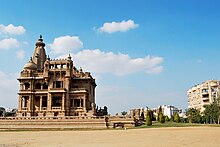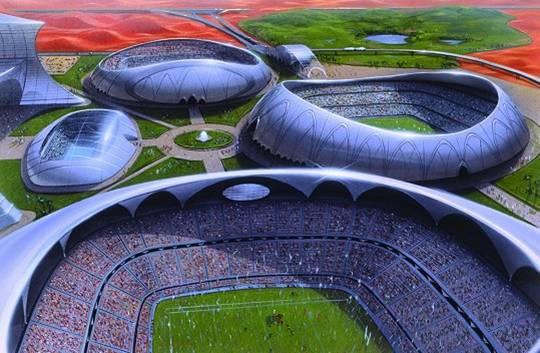There’s something fascinating about ancient cities that makes you want to explore everything they have to offer. If you, too, love to explore ancient civilizations or what remains of them, we have put together a list of the 10 oldest cities in the world that are still standing, reminiscent of how people lived millenniums ago.
10. Lisbon, Portugal (2000 B.C.?)

Set on seven low hills, on the north banks of the River Tagus, Lisbon’s charm is strongly linked to the past. Lisbon was first inhabited by Iberian people, responsible for building the megaliths. After centuries of growing, Lisbon is now one of the liveliest cities in Europe. The renovated palaces, magnificent churches and Art Nouveau buildings are just a few of the things that make up the city’s cultural heritage. There’s an impressive collection of ancient and modern art in many of the city’s museums such as the Calouste Gulbenkian Museum, the National Coach Museum, and the Carmo Archaeological Museum. When you’ve seen all the cultural attractions, be sure to head down to Bairro Alto, the center of nightlife, packed with restaurants, bars and clubs. There are also plenty of shopping opportunities either for local merchandise at the Campo de Santa Clara or famous brands in the Centro Commercial Colombo.
9. Luxor, Egypt (before 2160 B.C.)

Luxor, previously known as the ancient city of Thebes, the glorious city of the God Amon Ra, has been a hot tourist destination since tourism began. The area started attracting tourists ever since the Greek and Roman periods. Luxor is one of the most popular cities in Egypt, its stars being the monuments of Luxor, Karnak, Hatshepsut and Ramses III. There’s no wonder the city is often referred to as the world’s greatest open air museum, having a great number of well-preserved monuments. The city in itself actually consists of three distinct areas: the City of Luxor on the East side of the Nile, the town of Karnak and Thebes on the west side of the Nile, across from Luxor. You can bargain your way for anything in the city’s bazaar or enjoy the vegetarian paradise Luxor’s restaurants offer its tourists.
8. Asyut, Egypt (before 2160 B.C.)

Located 375km south of Cairo, Asyut is the largest town in Upper Egypt and the first settled in Pharaonic times. Today, Asyut is the region’s most important agricultural center and home of the third largest university in Egypt. The city has almost 400,000 inhabitant . It is said that Virgin Mary appeared in Asyut. Banana Island is a great place to relax, while the 19th century barrage on the North Edge of the city is a popular destination among tourists.
7. Xi’an, China (2205 B.C.?)

With a history of over 3,000 years, the city is one of the most important in Chinese history, being one of the Four Great Ancient Capitals of China. Xi’an, the eternal city, enjoys fame equal to that of other famous cities such as Athens, Cairo, or Rome. The abundance of relics and sites of important cultural significance gained the city the title of a Natural History Museum. Furthermore, the Museum of Terra Cotta Warriors and Horses is often referred to as “the eighth major miracle of the world”. The City Wall of the Ming Dynasty is the most well-preserved towns in the world of that period while the Famen Temple holds the finger bones of Sakyamuni — the founder of Buddhism. All in all, Xi’an is one of the most valuable places to get a taste of ancient China and their traditions.
6. Giza, Egypt (before 2568 B.C.)

“From atop these pyramids, forty centuries look down upon you.” — Napoleon Bonaparte to his soldiers before the Battle of Giza, 1798. Contrary to popular belief, Giza is a city in itself, but which got absorbed by the rapidly developing metropolis of Cairo. It holds one of the most important attractions in Egypt – the Pyramids of Giza, coupled with the Sphinx at the base of the Giza plateau. Giza’s desert plateau will be part of the Grand Museum of Egypt, a project to be completed in 2012 that will replace the Egyptian Museum in Midan Tahrir.
5. Konya, Turkey (2600 B.C.?)

Located 250 km from the Mediterranean Sea and 500 km from the Black Sea, at an altitude of over 1000 meters in the Anatolian steppe, Konya is one of Turkey’s most fascinating cities, full of mosques and museums. One of the most popular museums is the Green Mausoleum of Mevlana Celaleddin Rumi, a great Turkish poet. Konya has a vast array of historical finds, kept in several museums, such as the Archaeological Museum, the Koyunoglu Museum or the Ethnographical Museum.
4. Zurich, Switzerland (3000 B.C.?)

Switzerland’s biggest city and one of the oldest cities in Europe, Zurich was established in Roman times under the name Turicum. Traces of these times can be found throughout the Old Town – narrow streets filed with antique shops, boutiques and cafes. Shopping is concentrated around the famous Bahnhofstrasse, one of the most beautiful shopping streets in Europe. Besides shopping, you can explore the city’s culture by visiting Grossmünster or Fraumünster – two old churches with amazing interiors, the Swiss National Museum or Kunsthaus, another popular museum. Head down to Aussersihl – a newly developed area filled with bars, clubs, restaurants where you can get a taste of the real Swiss life. After seeing the city, you’ll surely find out why it was named the city with the best quality of life in the world.
3. Kirkuk, Iraq (3000 B.C.?)

With archaeological remains that are over 5,000 years old, Kirkuk is an important city for the Kurdish identity and also the center of the Iraqi petroleum industry. While it may not be the most inviting tourist destination, Kirkuk stands on the site of the ancient Assyrian, once being the battlegrounds for three empires, Assyria, Babylonia, and Media that took turns controlling the city. Sights include the citadel, the tomb of Prophet Daniel, and Al Qaysareyah Market. If you want to go back in time and see the remains of the ancient city, visit archaeological sites of Qal’at Jarmo and Yorgan Tepe, located at the outskirts of the city.
2. Jerusalem, Israel (3000 B.C.?)

A holy city for three different religions – Judaism, Christianity, and Islam, Jerusalem is the place where ancient values combine with modern culture to bring a fascinating metropolis. Jerusalem is divided into three parts – West Jerusalem, the rapidly developing commercial part of the city, East Jerusalem – home for the majority of the Arab population, and the Old City – a truly breathtaking location, declared by UNESCO a World Heritage Site. Once you get tired of sightseeing, you can check out the marketplace, a place teeming with tourist shops.
1. Gaziantep, Turkey (3650 B.C.?)

The capital city of Gaziantep Province informally known as Antep is the oldest city that’s still standing, with a history dating back to the Hittites period. It was continually inhabited ever since the Paleolithic age, experiencing serious growth along with the Ottoman Empire. Today, Gaziantep is a friendly, upbeat city with numerous mosques, medresse, inns and baths from centuries ago. The stone houses and vibrant bazaars are bordered by beautiful gardens and vineyards, combining in a spectacular sight anywhere you turn. With several museums and holy places, you’ll surely need more than one day to experience everything Gaziantep has to offer.


















































